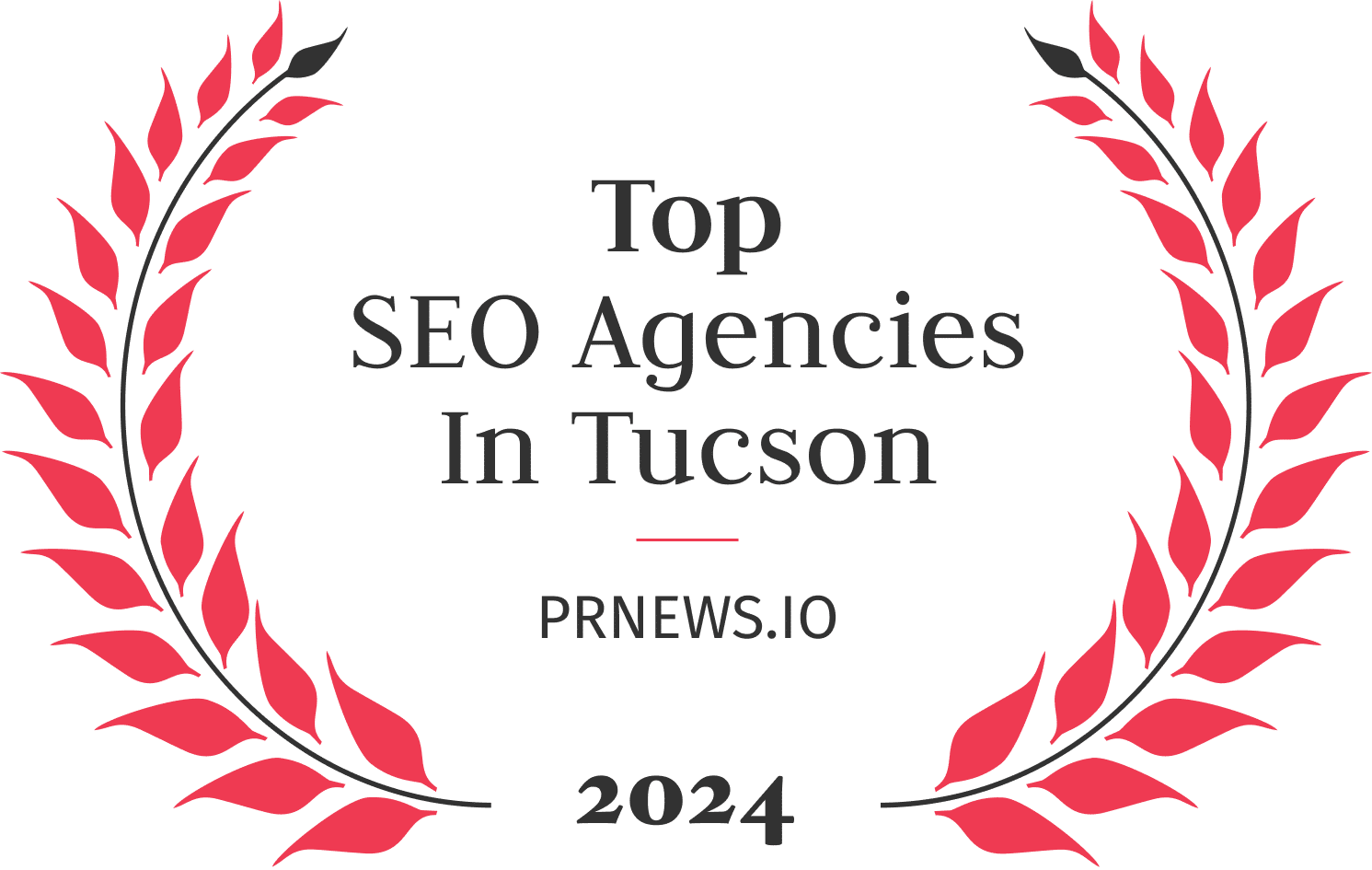
Found this article interesting?
If you would like personalized advice or have more questions, please contact us here.
How to Optimize Your Website Performance in Tucson, AZ
By Jose Roman in Website Design

In today's mobile and instant gratification-driven society, users do not tolerate websites that load slowly, go to the wrong pages or simply don't work. How intolerant are users in the area? Experts across the board agree that if your website doesn’t load in two to three seconds, a user is already on to the next site. That means that all the time and money you’ve spent showcasing your products or services is wasted simply because of your website’s performance. How do you build and maintain a super-fast website? How do website elements contribute to a better user experience? We answer these and other questions in our guide on how to optimize your website performance in Tucson, AZ. Read on to find out how to boost your site’s performance to reach and convert more leads. “Website optimization is enhancing your website's performance through various techniques, tools, and methods to improve user experience, increase traffic, and boost conversion rates.” Optimization involves making strategic changes to enhance your site’s speed, function, and visibility in search results. By optimizing your website, you attract more visitors and keep them engaged longer. A successful optimization strategy leads to higher conversion rates and directly impacts your revenue. Key aspects of website optimization include: To start with website optimization tasks, focus on the most impactful areas first. Begin by analyzing your current site performance using tools like Google PageSpeed Insights. Identify the main issues affecting your site's speed and user experience. Then, prioritize which improvements the site needs based on their impact on your marketing and revenue goals. There are all sorts of reasons to optimize a website. However, as a business owner, your primary concern is using your website to generate more revenue. Everything else is secondary. For this reason, you need to focus your optimization strategy on getting more people on the site and converting them into loyal, raving fans. Always keep this in mind when optimizing the site. Here are 4 resonance optimizing your website is important to make a huge splash in the Tucson market. If you’re worried about your ad spend budget going through the roof, the best way to reduce costs is to drive more organic traffic to your site. Website optimization boosts your organic search rankings. Higher rankings mean more visibility in search results, increasing organic traffic to your site. More organic visitors lead to more revenue without spending more on paid ads. When your website loads fast, visitors know where to go, and everything works, you build trust and confidence in the user experience. Visitors stay on the page longer, which reduces bounce rates and increases click-through rates (CTRs). Conversion rate optimization (CRO) turns more website visitors into paying customers. By optimizing elements like calls-to-action, page layout, and content, you can guide users toward desired actions, whether making a purchase or signing up for a service. Also, don’t forget that working on all the technical aspects of the website helps you achieve this goal as well. An optimized website opens a Pandora’s Box of income streams. You can implement affiliate marketing, display targeted ads, offer premium content through subscriptions, or create a high-end eCommerce site. You have more possibilities to generate income from a single platform simply because you’re managing everything behind the scenes. The result is endless opportunities to make more money. Now that you know the what and the why, here is the how. Below, we look at 10 tips for giving your website a smooth performance and attracting more users online. Server-side optimization involves improving your website's performance by enhancing the server that hosts and delivers your site. It focuses on tweaking server settings, software configurations, and backend processes to make your website faster and more efficient. Server-side optimization reduces the amount of work the server has to do so that it handles more visitors at once. This leads to a better experience for users, who won't have to wait long for pages to load. Overall, these improvements can help your business attract and retain more customers. Your server gives you continuous problems or is not optimized? At TagLine we offer the highest quality hosting service and we take care of the basic optimization settings to make your website fly like a rocket! A Content Delivery Network (CDN) is like a team of helper computers spread worldwide. These helpers store copies of your website's content, such as images and videos. When someone visits your site, the nearest helper sends them the content quickly instead of coming from your main server far away. A CDN makes your website faster and more reliable by serving your content from locations closer to your visitors. This means pages load quicker, no matter where your visitors are. It also helps your site handle more visitors at once without slowing down. If one helper computer has a problem, others can step in, keeping your site running smoothly. If you are not sure which CDN to use or don't know how to implement it, know that our high performance hosting service includes a CDN service, along with high security firewall, daily backups and more! Image optimization makes your website's pictures smaller and faster to load without losing image or file quality. It's like shrinking a big photo album so it takes up less space but still looks great when you open it. When pictures are smaller, they load quicker on phones and computers. Visitors don't have to wait long to see your content. Faster-loading images also help your website rank better in search results, which can bring more people to your site. Reducing plugins means using fewer add-on tools on your website. Plugins are like apps that add extra features to your website. Too many plugins can slow down your site, so using only the ones you need is smart. Each plugin adds extra code that your website has to load. By reducing plugins, your site has less work to do, so it runs smoother and loads quicker for visitors. This can keep people on your site longer and make them more satisfied with their experience. When designing and building our websites, we emphasize that the best optimization is unnecessary optimization. From the first steps of our web projects, we are very clear about which plugins to use and how to use them precisely so as not to overload the website with unnecessary code. Learn more about our Web Design service. CSS files are special documents that control how your website looks. They contain instructions for colors, fonts, layouts, and other visual aspects of your web pages. Think of CSS as a set of rules that tell your website how to dress up and present itself to visitors. Keeping all the style information in one place makes your web pages load quickly. You change how your website looks by editing just one file instead of updating every page. This saves time and reduces mistakes, making your website more consistent and professional-looking. JS files (short for JavaScript files) are special documents that add internal activity to your website. They contain instructions that make your website respond to user actions, like clicking buttons or filling out forms. They are the brains of your website, making it smart and responsive. JavaScript files can significantly increase website loading times due to their size and quantity, which lead to longer download durations. If not loaded asynchronously, they can block the rendering of the page as the browser must stop processing the HTML to download, parse, and execute the JavaScript. This, coupled with inefficient script execution, delays page interactivity, negatively impacting user experience and site performance. Caching is like creating a shortcut for your website's information. It saves copies of frequently used data in a special storage area. When someone visits your site, it can quickly grab saved information instead of creating it all over again. When information is cached, your site doesn't have to work as hard to show content to visitors. This means pages load quicker, which makes people less frustrted when they use your site. It also helps your website handle more visitors at once without slowing down. Fonts give your website a unique look. Some fonts come built into your computer, while others are special and must be downloaded when you visit a website. Many websites have a main brand font and several complementary sub-fonts. The right fonts load quickly, so visitors don't have to wait. They also make your text easy to read on all devices, from phones to computers. When fonts work well, they help your website look professional and keep people interested in your content. Reducing redirects means reducing the number of times your website sends visitors from one web address to another. When you click a link, sometimes the website needs to send you to a different address before you get to the right page. Reducing redirects means making that journey more direct. Every redirect adds a little delay before a page loads. By cutting down on redirects, visitors get to the content they want more quickly. Faster loading time improves user experience and can even help your website show up higher in search results. Fixing 404 errors means solving the problem of missing pages on your website. A 404 error happens when someone tries to visit a page that no longer exists or has never existed. Fixing these errors helps visitors find what they're looking for instead of hitting a dead end. When visitors can find the pages they want, they stay longer and have a better experience. This can lead to more sales or sign-ups. It also helps search engines understand your site better, which can improve your rankings. When it comes to running your website, there’s a lot going on under the hood. All these moving parts must work smoothly to give your potential customers a positive user experience. Tagline’s website design and management services keep your website running as it should to help you get more customers and generate more revenue.What Is Website Optimization?
Why Is Website Optimization Important?
1. You Lower Paid Ad Spending
2. More People Love Your Site
3. You Make More Money
4. You Make More Money…More Ways
10 Proven Website Optimization Techniques
1. Server Side Optimizations
What Is It?
How Does It Optimize Your Website?
Examples:
2. Use a Content Delivery Network (CDN)
What Is It?
How Does It Optimize Your Website?
Examples:
3. Image Optimization
What Is It?
How Does It Optimize Your Website?
Examples:
4. Reduce Plugins
What Is It?
How Does It Optimize Your Website?
Examples:
5. Optimize CSS Files
What Is It?
How Does It Optimize Your Website?
Examples:
6. Optimize JS Files
What Is It?
How Does It Degrade Your Website?
Examples:
async or defer attributes in the script tags. This prevents JavaScript from blocking the rendering of the page, allowing the rest of the content to load without waiting for the script to finish.7. Use Caching
What Is It?
How Does It Optimize Your Website?
Examples:
8. Fonts
What Is It?
How Does It Optimize Your Website?
Examples:
9. Reduce Redirects
What Is It?
How Does It Optimize Your Website?
Examples:
10. Fix 404 Errors
What Is It?
How Does It Optimize Your Website?
Examples:
Optimize Your Website With Tagline’s Website Optimization Services
Still have questions or specific needs? we're ready to assist! Reach out to us for personalized advice and solutions tailored to your business.



